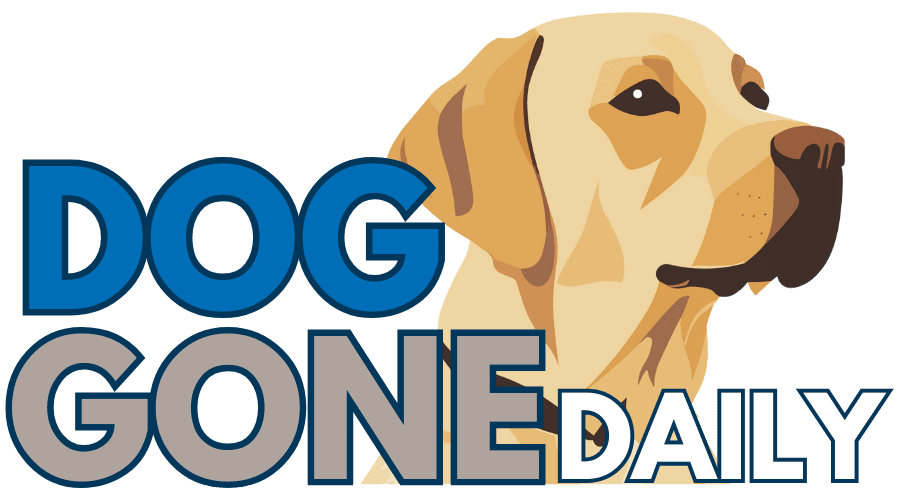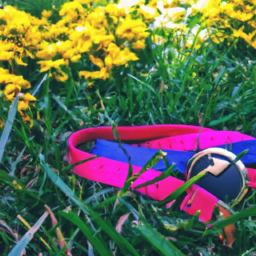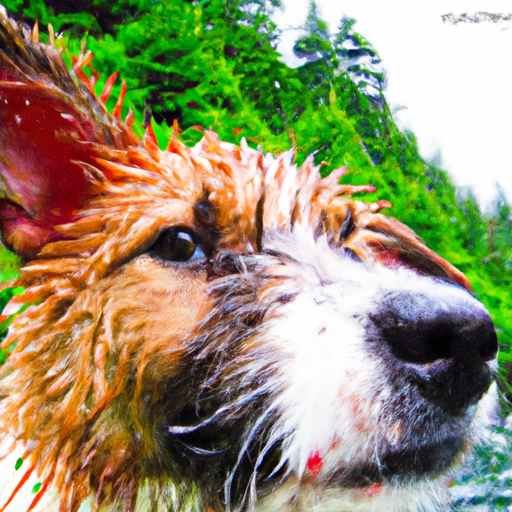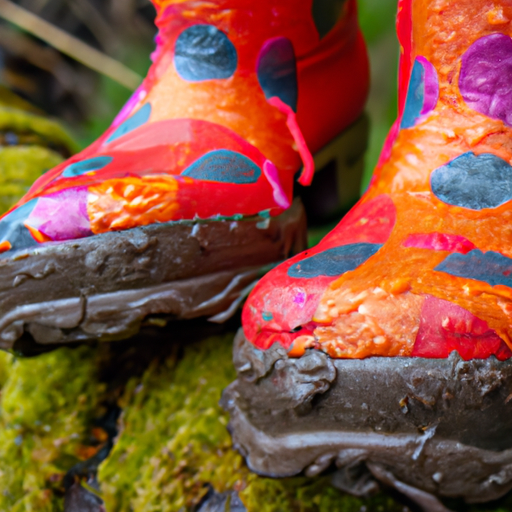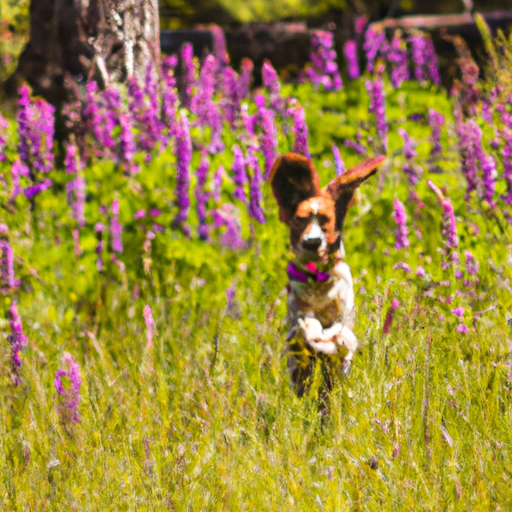So you've brought home a new bundle of furry joy in the form of a puppy, and as you watch them scamper and play, you can't help but wonder when the time will come for off-leash adventures. But before you unleash your pup into the wide world, there are a few factors to consider. From their age and training progress to their natural instincts and the environment, this article aims to guide you through the important milestones and considerations on the road to off-leash freedom. So, let's explore when you can safely start off-leash activities with your puppy and ensure their well-being while embracing the joy of untethered exploration.
Physical Development
Bone Development
The bone development of a puppy is crucial for their overall health and well-being. As they grow, their bones undergo various changes, becoming stronger and more stable. However, it's important to allow their bones to develop fully before engaging in off-leash activities. Typically, most puppies' bones are fully developed by the time they reach 12 to 18 months of age. This timeframe may vary depending on the breed and size of your puppy.
Muscle Development
Just like bone development, muscle development is an essential aspect of a puppy's physical growth. During their early months, puppies have high energy levels and love to engage in physical activities. However, their muscles are still developing, and it's important not to push them too hard too soon. Before allowing your puppy to participate in off-leash activities, ensure that their muscles have developed adequately. Regular exercise and activities such as walks and supervised playtime can help strengthen their muscles over time.
Coordination
Coordination plays a vital role in a puppy's ability to navigate their surroundings confidently. It involves the integration of sensory information and muscle movements, allowing a puppy to move smoothly and efficiently. While puppies naturally develop coordination as they grow, it is important to note that it can take time for them to become fully coordinated. Engaging in on-leash activities and basic training exercises can help improve their coordination skills before venturing into off-leash activities. It is crucial to have patience and give your puppy enough time to develop their coordination skills.
Socialization
Getting Used to the Environment
When it comes to off-leash activities, it is essential for your puppy to be comfortable and familiar with their environment. Puppies need time to adapt to new spaces and become acquainted with the sights, sounds, and smells around them. Before allowing your puppy off-leash, take them to various environments on a leash, such as parks, beaches, or other outdoor areas. This exposure will help them become more confident and adjust to new surroundings, making off-leash activities a more enjoyable experience.
Interacting with Other Dogs
Socializing with other dogs is an important part of a puppy's development. It helps them learn proper canine communication, body language, and boundaries. Before engaging in off-leash activities with other dogs, ensure that your puppy has had positive experiences with friendly and well-behaved dogs. Organized puppy playdates or supervised interactions with known and vaccinated dogs can help your puppy build social skills and become comfortable with off-leash interactions.
Meeting New People
In addition to interacting with other dogs, it is crucial for your puppy to have positive experiences with different people. This includes meeting individuals of various ages, genders, and ethnicities. Exposing your puppy to different people at an early age helps them develop confidence, reduces fear and anxiety, and promotes a friendly and sociable demeanor. Introduce your puppy to new people gradually, ensuring that the encounters are always positive and rewarding. Once your puppy becomes accustomed to meeting new people on a leash, you can gradually progress to off-leash interactions in controlled environments.
Training
Basic Commands
Before engaging in off-leash activities, it is essential for your puppy to have a solid foundation in basic obedience commands. Basic commands such as “sit,” “stay,” “come,” and “leave it” play a crucial role in ensuring your puppy's safety and maintaining control during off-leash activities. Training your puppy in a positive and reward-based manner, using treats and praise, will help them understand and respond to these commands reliably. Consistency and regular practice are key in reinforcing these commands and preparing your puppy for off-leash adventures.
Recall Training
One of the most important commands for off-leash activities is the recall command, also known as “come.” Teaching your puppy to come to you reliably when called can prevent potential dangers and ensure their safety. Recall training should be started in a controlled environment with minimal distractions, gradually progressing to more challenging situations. Use high-value treats and praise to reinforce the recall command, making it a positive and rewarding experience for your puppy. Consistent practice and reinforcement will help your puppy understand the importance of coming to you when called, even in stimulating environments.
Leash Training
While off-leash activities allow your puppy more freedom, it is essential for them to have a good understanding of leash manners and walking on a leash before venturing off-leash. Leash training helps your puppy learn how to walk politely, without pulling or lunging, and promotes better control during off-leash adventures. Begin leash training by teaching your puppy to walk on a loose leash and respond to gentle leash cues. Gradually introduce distractions and practice in various environments to ensure your puppy's ability to remain focused and responsive, both on and off-leash.
Mental Maturity
Focus and Attention Span
Mental maturity is an important consideration when determining if your puppy is ready for off-leash activities. Puppies have limited attention spans and can easily become distracted by their surroundings. It is essential to gauge your puppy's ability to maintain focus and attention on you even in stimulating environments. Engage in training exercises and activities that require focus, gradually increasing the level of distractions. Once your puppy demonstrates the ability to stay attentive and responsive, they may be ready for off-leash adventures.
Impulse Control
Puppies are known for their boundless energy and impulsive behavior. However, off-leash activities require a certain level of impulse control to ensure your puppy's safety and prevent them from engaging in undesirable behaviors such as chasing wildlife or running off. Teaching your puppy self-control exercises, such as “wait” or “leave it,” can help them resist temptations and make better decisions when off-leash. Consistent training and positive reinforcement will assist your puppy in developing the necessary impulse control for safe and enjoyable off-leash experiences.
Problem-Solving Skills
Off-leash activities often present puppies with new challenges and scenarios that require problem-solving skills. It is important to assess your puppy's ability to think critically and make appropriate choices when faced with obstacles or unexpected situations. Engage in puzzle games, interactive toys, and training exercises that encourage problem-solving and decision-making. Strengthening your puppy's problem-solving skills will not only enhance their mental abilities but also contribute to their overall safety and well-being during off-leash activities.
Behavioral Considerations
Size and Breed Tendencies
When considering off-leash activities, it is important to take into account your puppy's size and breed tendencies. Smaller breeds may be more prone to running off or getting lost in larger areas, while certain breeds may have a higher prey drive or a tendency to wander. Understanding your puppy's breed characteristics and consulting with a professional trainer or breeder can help you determine if off-leash activities are suitable and safe for your specific puppy. Adjustments and precautions may need to be made based on your puppy's individual traits and needs.
Temperament
Each puppy has a unique temperament that can influence their behavior and response to off-leash activities. Some puppies may be naturally more cautious or shy, while others may be outgoing and adventurous. It is important to consider your puppy's temperament and comfort level in new and potentially stimulating environments. Gradual exposure and positive reinforcement can help build your puppy's confidence and ensure a positive off-leash experience. Always prioritize your puppy's well-being and adjust the pace of off-leash activities based on their individual temperament.
Threshold for Distractions
Off-leash activities often involve exposure to various distractions, such as other animals, unfamiliar scents, or loud noises. Understanding your puppy's threshold for distractions is critical in determining their readiness for off-leash adventures. Gradually introduce your puppy to different stimuli, starting with low-intensity distractions and gradually increasing the level of challenge. Observing your puppy's reactions and behavior in the presence of distractions will help you assess their ability to remain focused and responsive off-leash. Patience and positive reinforcement will play a crucial role in gradually expanding your puppy's threshold for distractions.
Safety Precautions
Vaccinations and Health Check-ups
Before engaging in off-leash activities, ensure that your puppy is up to date on their vaccinations and has received a thorough health check-up from a veterinarian. Vaccinations help protect your puppy from contagious diseases, and regular health check-ups ensure that they are in good overall health. Following your veterinarian's recommendations for vaccination schedules and preventative treatments will help minimize potential health risks during off-leash activities.
Choosing the Right Environment
The choice of environment for off-leash activities plays a significant role in ensuring the safety and enjoyment of your puppy. Select areas that are secure, free from hazards, and provide adequate space for your puppy to explore and play. Avoid busy roads, areas with excessive wildlife, or places where your puppy may encounter aggressive or unfriendly dogs. Familiarize yourself with local leash laws and regulations to ensure you are choosing appropriate off-leash environments.
Supervision and Supervision Levels
Off-leash activities require proper supervision to ensure your puppy's safety and well-being. Initially, it is recommended to have your puppy on a long leash or in a securely enclosed area to allow for supervised exploration. As your puppy demonstrates reliable recall and obedience, you can gradually decrease the level of direct supervision. However, it is important to always keep a close eye on your puppy's behavior and surroundings to intervene if necessary. Remember, off-leash does not mean unsupervised. Providing appropriate levels of supervision will help prevent accidents and ensure a positive off-leash experience for both you and your puppy.
Gradual Off-leash Introduction
Enclosed Spaces
When introducing off-leash activities, it is advisable to start in securely enclosed spaces such as a fenced backyard or a designated dog park. These environments provide a controlled setting where you can assess your puppy's response to off-leash freedom. Observe their behavior, recall abilities, and interaction with the environment before progressing to more open areas.
On-leash Exploration
Before venturing into completely off-leash activities, consider allowing your puppy limited off-leash time while still on a leash. This approach helps them practice recall and explore their surroundings with the comfort of a safety tether. Gradually increase the duration of off-leash time while on a leash, carefully monitoring their behavior and responsiveness.
Off-leash in Controlled Areas
Once your puppy demonstrates reliable recall, obedience, and familiarity with their environment, you can begin off-leash activities in controlled areas. Choose wide-open spaces with minimal distractions and gradually progress to more stimulating environments. Continue to reinforce training cues and monitor their behavior to ensure a safe and enjoyable off-leash experience.
Monitoring and Assessment
Observe Reactions and Behaviors
When engaging in off-leash activities, it is crucial to closely observe your puppy's reactions and behaviors. Monitor their body language, energy levels, and interactions with the environment. Pay attention to any signs of fear, anxiety, or aggression, as well as positive behaviors such as focused attention and appropriate socialization. Regularly assess your puppy's emotional well-being and make adjustments to off-leash activities based on their comfort level and needs.
Evaluate Recall Abilities
The recall command is a vital component of off-leash activities. Regularly evaluate your puppy's recall abilities by calling them back to you in different scenarios and environments. Assess their response time, enthusiasm, and consistency in coming when called. This ongoing evaluation will help identify any areas that require additional training or reinforcement and ensure that your puppy remains safe and responsive during off-leash adventures.
Adjusting Off-leash Time
As your puppy continues to grow and develop, their off-leash time can be adjusted accordingly. Some puppies may require shorter but more frequent off-leash sessions, while others may thrive in longer sessions with breaks in between. Pay attention to your puppy's energy levels, physical abilities, and overall well-being when determining the appropriate duration and frequency of off-leash activities. Flexibility and adapting to your puppy's changing needs will promote a positive and enjoyable off-leash experience.
Benefits of Off-leash Activities
Physical Exercise
Engaging in off-leash activities provides puppies with ample opportunities for physical exercise and stimulation. Whether it's running, chasing, or exploring, off-leash time allows puppies to release excess energy, strengthen their muscles, and improve their overall fitness. Regular exercise through off-leash activities helps prevent obesity, promotes cardiovascular health, and contributes to a happier and healthier puppy.
Mental Stimulation
Off-leash activities offer more than just physical exercise; they also provide valuable mental stimulation for puppies. Exploring new environments, encountering various stimuli, and engaging in problem-solving enhance their cognitive abilities and mental well-being. Off-leash adventures challenge puppies to think, adapt, and make decisions, ultimately contributing to their overall mental development and fulfillment.
Stronger Bond with Your Puppy
The time spent engaging in off-leash activities helps strengthen the bond between you and your puppy. It allows for shared experiences, mutual trust-building, and enhanced communication. Your puppy learns to rely on you for guidance and support, ensuring a deep and meaningful connection. The freedom and joy experienced during off-leash adventures create lasting memories and contribute to a lifelong friendship with your furry companion.
Conclusion
Off-leash activities can be a rewarding and enriching experience for both you and your puppy. However, it is essential to consider your puppy's physical development, socialization, training, and mental maturity before embarking on off-leash adventures. By taking gradual steps, ensuring your puppy's safety, and prioritizing their well-being, you can create a positive and enjoyable off-leash experience that strengthens your bond and enhances their overall development. Always remember to assess your puppy's readiness, monitor their behavior, and provide appropriate supervision to ensure a safe and fulfilling off-leash journey.
